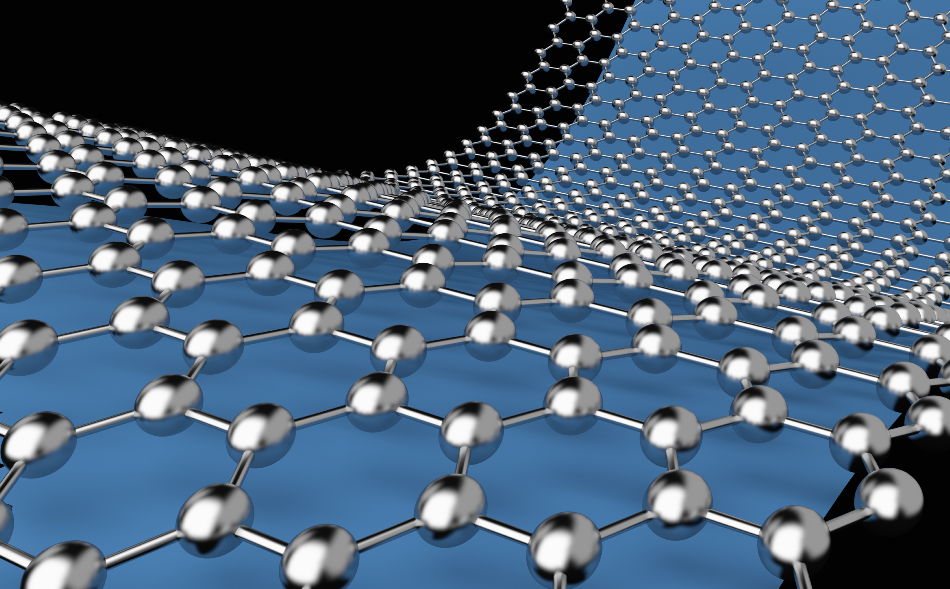
Image Credit: Ambelrip/Shutterstock.com
Graphene and its various derivatives, such as graphene oxide, have become widely used materials for many applications. While many tend to focus on their mechanical and electrical properties, graphene’s optical properties tend to fall by the wayside. There are specific differences between the optical properties of pure graphene and graphene oxide, and both have beneficial optical properties. This means they can be used for different optical applications. How and why graphene oxide is used in optical applications will be explored in this article.
Not much attention is paid to the optical properties of the ‘graphenes’ and much less so to graphene oxide. Single-layer graphene is known to be optically transparent, and therefore useful for several optoelectronic devices, sensors, and other optical technologies, but what about graphene oxide?
Graphene oxide is a version of graphene where the basal plane and edges are functionalized with oxygen groups―with hydroxy groups being present in the basal plane and carboxylic acid groups on the edges. Graphene oxide can also be further reduced to create reduced graphene oxide, where the basal hydroxy groups are removed, and the edge carboxylic acids are converted into hydroxy groups.
All the properties of graphene oxide and reduced graphene oxide are dependent upon the thickness of the graphene, which is, in turn, dependent on the number of layers.
The optical transmittance of both graphene oxide and reduced graphene oxide can be tuned by varying the thickness of the material. Graphene oxide has an optical absorption of 225-275 nm, whereas the absorption in reduced graphene oxide materials is usually around 270 nm.
The optical absorption values in graphene oxide and reduced graphene oxide are due to the π electrons in the graphene sheet and the π-π transitions which occur as a result. Graphene oxide can also be used for absorbing wavelengths in the ultraviolet (UV) and near-infrared (NIR) regions of the electromagnetic spectrum. Many of the optical applications of graphene oxide and reduced graphene oxide are in optoelectronic and flexible electronic devices.
Transparent Conductive Films (TCFs)
While graphene oxide often shows insulating properties compared to its unfunctionalized counterpart, it can be made conductive. Graphene oxide is a lot more soluble than non-functionalized graphene, and alongside its optical transparency at low-layer number levels, it can be used alongside other materials to make transparent conductive films (TCFs) and transparent conductive electrodes.
In many cases, the inherent flexibility of graphene oxide means that these films are flexible. Graphene oxide is seen as the replacement for indium tin oxide (ITO) in many TCF and transparent electrode applications.
In terms of the specific applications, both TCFs and transparent electrodes can be used in a wide number of electronic and optoelectronic devices. The TCFs and transparent electrodes, which utilize either graphene oxide or reduced graphene oxide, can be found in optical sensors.
These electrodes are also found in sensors and other flexible components that are used in the following:
- Flexible and wearable electronics
- Organic light-emitting diodes (OLEDs)
- Liquid crystal devices (LCDs)
- Dye-sensitized solar cells (DSSCs)
- On-chip electronics
- Thin-film transistors
- Field emitters
- Flexible memory devices
Research in the last 10 years has also yielded liquid crystal phases of graphene oxide (dispersed in an aqueous medium), meaning that this may be another area that manifests itself as a commercial possibility in the future.
Bio-Applications of Graphene Oxide
Because graphene oxide, depending on how it is tuned, can absorb wavelengths in the visible, UV, and NIR regions of the electromagnetic spectrum alongside an intrinsic and tunable fluorescence, the materials have been trialed as a way of imaging live biological samples, often when the graphene oxide has been further functionalized to be more biocompatible.
For imaging, the fluorescence quenching ability of graphene oxide has been utilized to act as a dark contrast medium in fluorescence quenching microscopy.
Optical biosensors that utilize graphene oxide can be used to identify various dye-sensitized biomolecules, including single-strand DNA. Moreover, because graphene oxide has a strong optical absorbance in the NIR region, it has been trialed as an in-vivo photothermal therapy for ablating tumors. It should be noted that the biological-based applications of graphene oxide are still confined to the academic lab.
References and Further Reading
Disclaimer: The views expressed here are those of the author expressed in their private capacity and do not necessarily represent the views of AZoM.com Limited T/A AZoNetwork the owner and operator of this website. This disclaimer forms part of the Terms and conditions of use of this website.